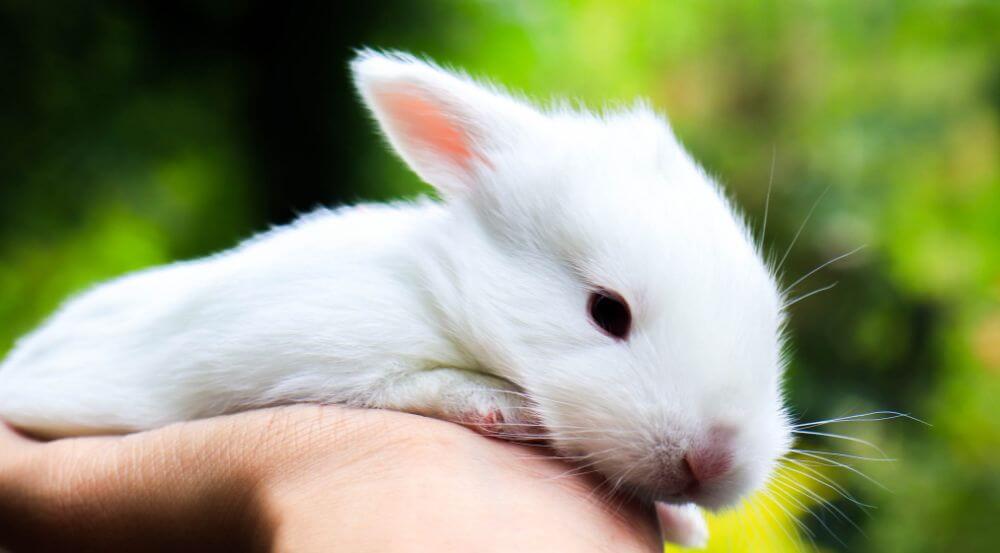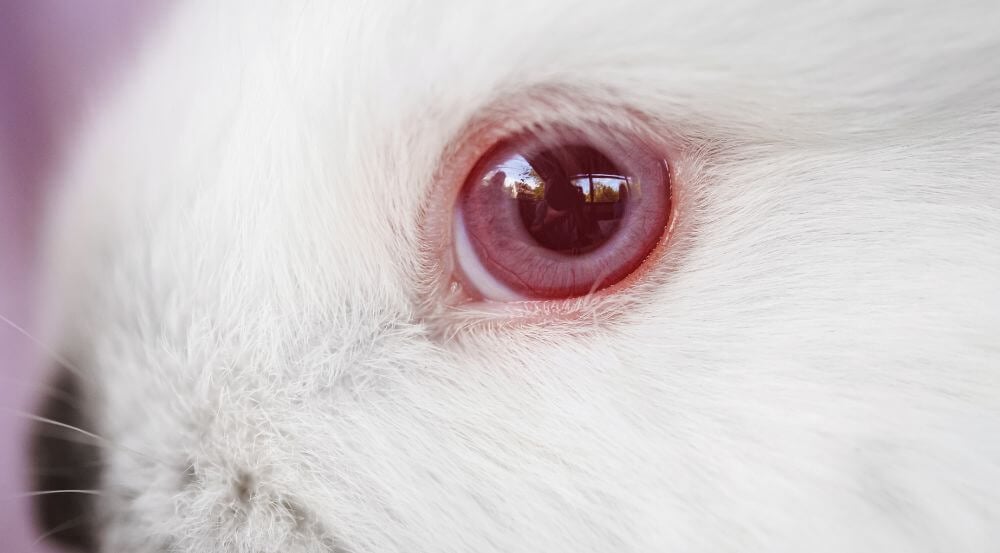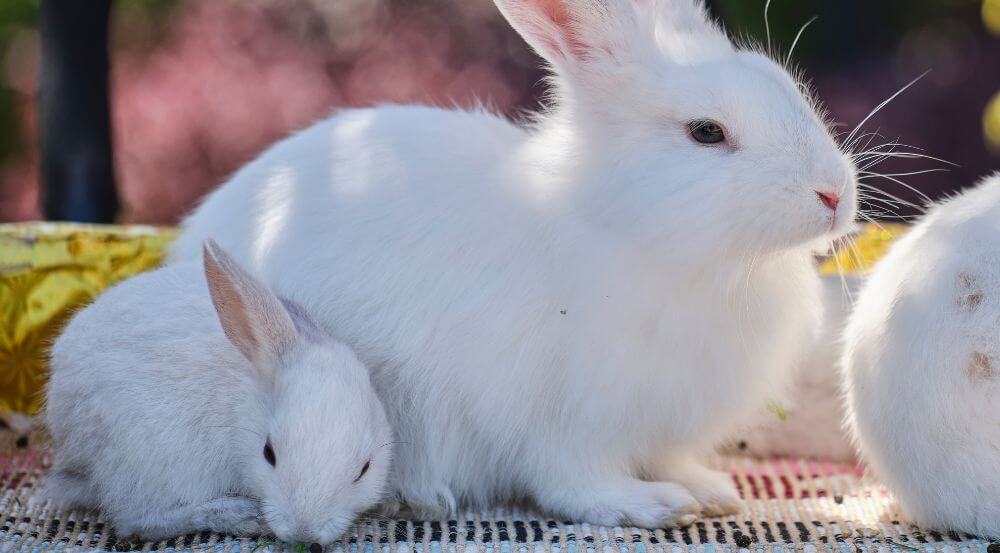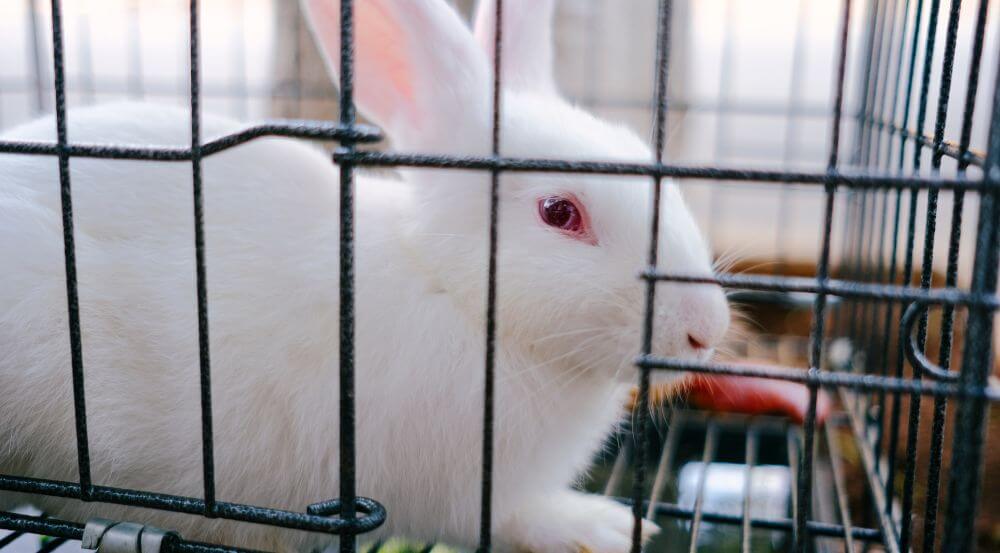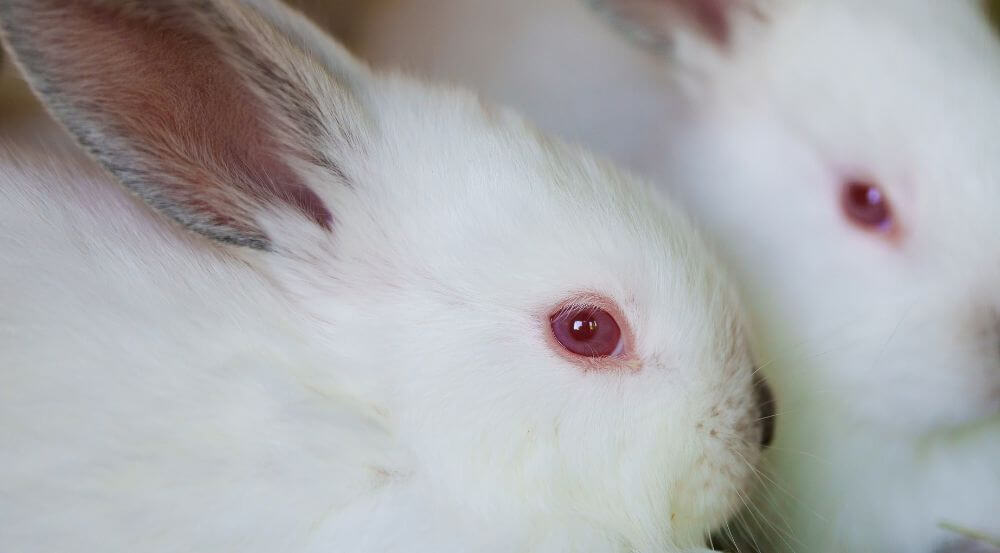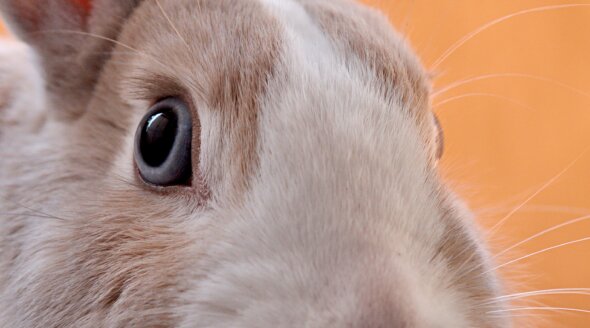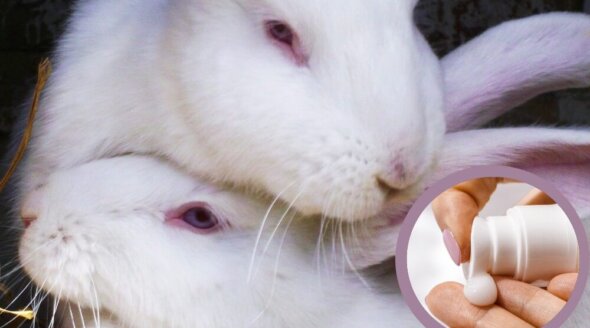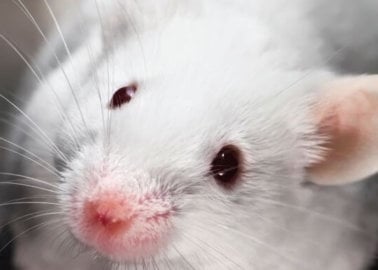5 Experiments on Rabbits That Will Make You Shiver
Imagine spending your life in a barren cage; being drugged, poisoned, and cut without ever giving consent; and eventually being killed. Rabbits are mild-tempered, which makes them easy to handle, confine, and breed. Experimenters torment hundreds of thousands of them in laboratories across the UK and EU. Read on to learn what gentle rabbits are being subjected to, why it’s bad science, and what you can do to help them.
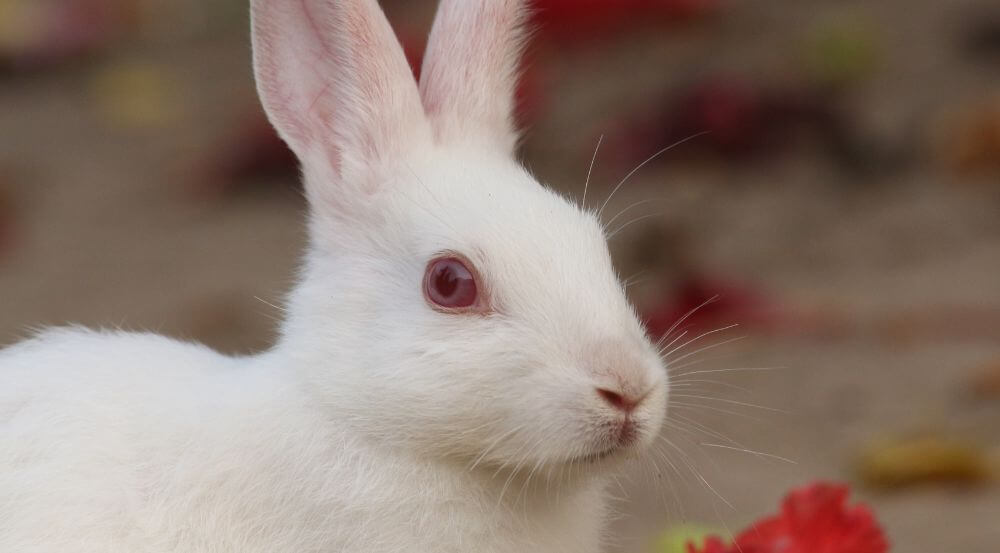
1. Baby Rabbits Are Deliberately Poisoned With Shellfish Bacteria and Killed
Experimenters infected baby rabbits who were no more than 3 days old with a bacteria found in raw or undercooked shellfish, essentially giving them horrible food poisoning. In humans, such an infection causes watery diarrhoea, abdominal cramps, nausea, vomiting, and fever. The experimenters inserted tubes down the rabbits’ throats and injected the bacteria directly into their stomachs. The infected babies developed severe diarrhoea and poisoning symptoms. Experimenters killed them all within days following the infection.
2. Experimenters Insert Drugs Into Rabbits’ Eyes and Collect Their Tears
In this sinister test conducted in the UK, experimenters apply a cocktail of drugs to the surface of rabbits’ eyes and collect their tears for monitoring. Experimenters also inject the drugs directly into the eyes of other rabbits before killing and dissecting them.
3. Offspring Are Intentionally Deformed and Ripped From Their Mother’s Womb
In Belgium, experimenters use pregnant rabbits to study the effects of medications on unborn babies with holes in their diaphragms. This abnormality affects lung development and causes breathing issues at birth.
Experimenters implant pumps under the mother rabbit’s skin that help to continuously inject the medication. At a later date, experimenters cut through the mother’s belly and womb to access her unborn babies and create holes in their diaphragms to simulate a similar condition. Just before the mother is due to give birth, she’s rendered unconscious and blood is drawn directly from her heart. Experimenters remove the babies from the womb and kill the mother.
Once taken from the womb, some of the babies are anaesthetised to ready them for further surgery in which tubes are inserted into their lungs through a hole in their neck so lung function can be measured. Other babies are immediately decapitated with scissors and their organs are harvested.
4. Animals’ Bones and Knees Are Deliberately Damaged
How would you feel if someone sedated you and deliberately damaged your bones before continuing to torment you in an attempt to “repair” them? In Spain, experimenters sedated rabbits and removed approximately a quarter of one of the bones in a front leg. Some of the rabbits were left to recover from surgery with the bone fragment missing, others received a bone graft taken from their pelvis, and a third group received a prototype scaffold to replace the incised bone fragment. The rabbits were then monitored for six to 12 weeks post-surgery. Experimenters killed one rabbit because his spinal cord was badly damaged when staff cleaned his cage, and some of the others developed infections following the surgery. At the end of the experiment, all the rabbits were killed.
In another experiment in Spain, laboratory workers deliberately created bone defects in the knees of 12 young New Zealand white rabbits. This Frankenstein-style experiment involved “repairing” the damage by inserting scaffolds made from shark and bovine skin, teeth, and bone into the rabbits’ knees. The shark-tooth scaffolds were made by boiling the heads of mako sharks and blue sharks to remove the teeth, which were then ground into powder. The mako shark is listed as an endangered species.
5. Mother Rabbits Are Fed Chemicals and Killed
Can you think of anything more perverse than torturing vulnerable mothers-to-be? Experimenters shoved tubes into pregnant rabbits’ stomachs to give them a daily dosage of a pesticide. Four of the rabbits died because of staff’s intubation errors – either liquid was pumped into their lungs or their throat was pierced by the tube as it was wrongly inserted. Just imagine their agony.
All the mothers and their offspring were killed and dissected. About half of the mothers who received higher doses of the chemicals died from toxic effects and were found to have blood in their urine and severe problems with their kidneys. One mother was killed because she was experiencing respiratory distress.
Some of the survivors of the initial pesticide ingestion lost more than half of their body weight. Some of the foetuses had severe malformations, such as extra ribs, and others died in the womb. One mother even ate all her babies once they were born – which is not considered to be normal behaviour in rabbits and usually only occurs when the mother is extremely stressed from being in a hostile environment.
Bad Science
Rabbits are biologically, metabolically, and physically different to humans. Testing on animals is not only cruel but also bad science that can hold us back from making scientific breakthroughs.
The world’s forward-thinking scientists are developing and using non-animal methods that are actually relevant to human health for studying diseases and testing products.
These modern approaches include sophisticated tests using human cells and tissues (also known as in vitro methods), advanced computer-modelling techniques (often referred to as in silico models), and studies with human volunteers. These and other non-animal methods are not hindered by species differences that make it difficult – if not impossible – to apply the results to humans, and they usually take less time and money to complete.
Rabbits Need Your Help
The UK could be a world leader in modern, non-animal science. Urge your local candidates to take a stand against cruel experiments and embrace human-relevant research fit for the 21st century:
Please also help animals tormented in the EU:

